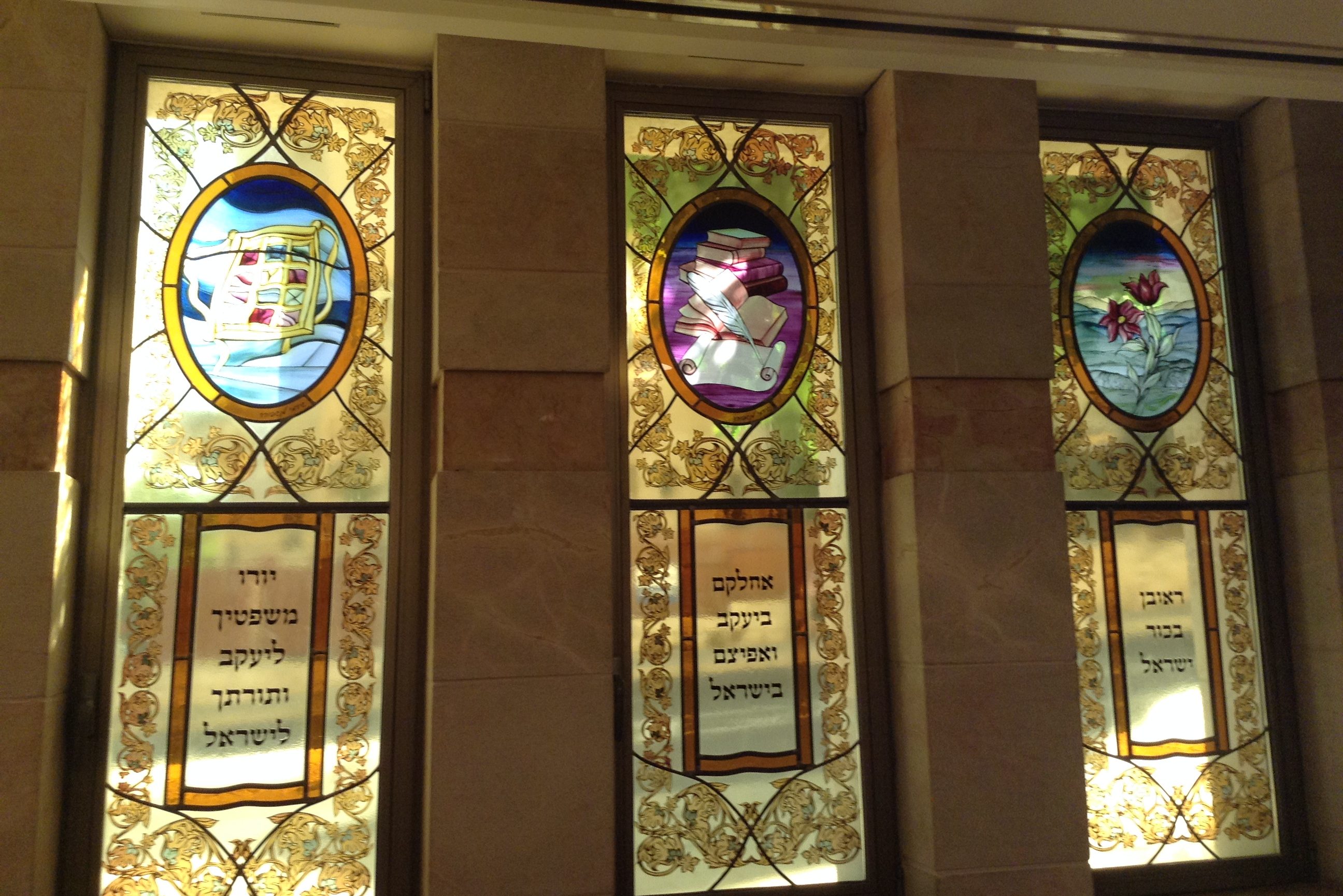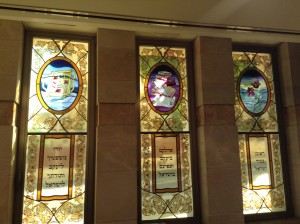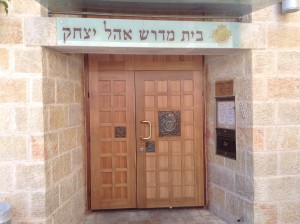We cried out to the Eternal from the harsh sting of Pharaoh’s whip. We wept by the waters of Babylon, bereft that our glorious Temple had been destroyed and we were driven to exile. We were lost and vulnerable when we were cast out to the four corners of the globe when the Romans destroyed the Second Temple. In the centuries since, we have endured persecution at the hands of governments and thugs. Our own part in the narrative has smokestacks as backdrop.
It is true, in each generation a Haman arises to plague us.
Is it any wonder that it is both easy and understandable to view Jewish history as a narrative of distress and persecution? Yes, we have suffered. We have cried out to the Almighty to save us, to deliver us. We have ached and we have bled. We have been packed in railway crates and marched to the crematoria.
Oh, we have suffered.
We have been murdered.
Is there a lesson to be learned from our experience? Is there transcendence to be realized from our suffering? We have known the darkness of the darkest night. Is it, as Rabbi Soloveichik taught, that in the midst of every galut there is geula; that there can be no night without the morning to come? The world moves on, leaving behind and forgetting those who suffered and died. Is my father’s lesson, that those who perished left us with a clear mission – to live and thrive, to build a Jewish world, true?
Not so long ago, my dear wife, Clary, and I were sitting on “our” bench in Yerushalaim’s Keren Hayesod Street. From there we could see the beautiful stained glass windows embracing the Beit Knesset on the ground floor of Rehov Washington 12. As we sat enjoying the Jerusalem breeze, Clary could not take her eyes from those windows.
“What is it?” I asked her.
Slowly, and with tears in her eyes, she recalled the stained glass windows in the bombed-out shul in her native Szerencs, Hungary hometown. Her last memories of the shul was only of those windows. The interior had been destroyed and desecrated by the Nazis.
As I reached across to hold her hand, I could only imagine the image in her mind’s eye and how seeing these beautiful windows in our rebuilt Yerushalaim had caused her memories to be rekindled.
As I looked at her, I could not help but remember my father, Rav Yosef ben Harav Bezalel Ze’ev and his community of fifty thousand. Elected to be chief rabbi at only twenty-seven years of age, an acknowledgement of his deep learning and wisdom, he brought together a community committed to unity, education and tradition. Each member of the community was as a member of his family, dear to him.
As chief rabbi, he together with my mother, Esther, were witness to the full brutality of the infamous pogrom in Iasi, Romania in June 1941. Three days of terror, described by historians as one of the most horrific and inhumane in Jewish history. He was one of the first to be shot, sustaining wounds to his legs. During those three days, thirteen thousand, thirteen thousand, were brutally and gruesomely slaughtered.
I thought of the horrors that befell the Hungarian Jewish community in those dark days of Shoah and destruction, a dynamic community of hundreds of thousands of good Jews, blessed by rebbes, rabbanim, shuls, yeshivas, centers of Jewish life and lore. A Jewish community in which Clary’s parents Reb Shiya Guttmann and his beloved Alte Rochel Leah were separated, each to another part of hell on earth. He, alone. She, with her five kinderlach. Soon after their arrival in Auschwitz the children were taken from her. In anguish and desperation, she begged the cursed officer, “Where are my children? Where are my children?” He, rasha that he was, held her with the cold, cruel glint in his eye. He nodded up toward the sky. “Your children, look up there at the top of the chimney. Do you see the smoke coming out?” She looked up, confused by his words. He laughed harshly. “That smoke. There are your children!”
The Talmud tells of the time Rabbi Chananya ben Tradyon went to visit Rabbi Yosi ben Kisma when he had taken sick. Rabbi Kisma said, “Chanaya my brother, don’t you know that this nation [the Roman Empire] has been empowered by Heaven, allowed to destroy His House, burn his Sanctuary, kill His pious ones. They will burn you and the sifrei Torah together…”
Indeed, the Roman Empire wreaked destruction upon the Jewish Community, sparing no one. Certainly not Rabbi Chananya ben Tradyon. True to Rabbi Kisma’s vision, Rabbi Chananya was burned at the stake, wrapped in the blessed Torah scroll. The Romans had placed moist cotton over his heart to prolong the process of his death, increasing his pain and agony.
As the tzadik was burning with the sefer Torah, the Romans mocked him by deriding him with the obvious. “Oh, teacher. Do you see the flames consuming you?”
His disciples came close, feeling the heat from the fire as they drew closer still. “Rabbi, what do you see?”
Incredibly, a smile flickered across the rabbi’s lips. “I see the parchment being consumed by the flames,” he said. “But the letters… the letters I see flying off. They remain.”
The evil guard at Auschwitz saw only the smoke coming from the smokestacks of the crematoria. He saw the flesh being consumed.
He did not have eyes to see the children flying heavenward, forever to remain.
* * *
I held Clary’s hand that day as we looked across Keren Hayesod at the stained glass windows and I said, “We will write a sefer Torah to be placed in that shul!”
She looked at me, the tears continuing to well up in her eyes.
“This is our home,” I said to her. “This is ours. We are here to stay.”
* * *
Each letter, precious. Each letter, holy. Within each, the entirety of Torah. Within the entirety of Torah, each letter.
Each child, precious. Each child, holy. Within each, the entirety of creation. Within the entirety of creation, each child.
* * *
The final mitzvah of the Torah rings with hope and joy, Veata kisvu lachem es ha’shira hazos, “So now write this song for yourselves.”
What an awesome command! To write a sefer Torah; to commit to the scroll each and every letter. We know that there are six hundred thousand letters in the Torah. This number is, of course, significant in and of itself. For it not only alludes to the name of our people and nation, but also to the number of Jewish souls counted in the first census in the desert after we had been freed from our slavery. Six hundred thousand, the number representative of all klal Yisrael.
The Pnei Yehoshua explains, based on the Shloh, that every Jew has within his soul one particular mitzva that is attached to one particular letter in the Torah. All the souls of klal Yisrael are inherent in the letters of Torah, letters each and every Jew claims rights to!
The Ari z’l taught that the soul of each and every Jew is rooted in a letter in the Torah, that each letter has a spiritual power to them because each originates at the Heavenly throne, the same place where all souls originate; and thus each is linked to a letter.
It is because of this truth that hachnossas sefer torah is such an incredible and astonishing simcha. Not simply because another sefer Torah is added to the aron hakodesh in Ohel Yitzchak, the shul that received our Torah, and not simply because another sefer Torah was added to the thousands all over Eretz Yisrael. No, this incredible simcha is not the consequence of an accrual but quite the opposite. It is astonishing in the uniqueness and singularity of the mitzvah.
This is, in truth, personal. Each and every Jew rejoices with the hachnasas sefer Torah because each and every Jew can truly and deeply know that he has a letter in it. Each can correctly claim, “It is mine!”
Who would ever ask a yid at his son’s or grandson’s bar mitzvah or wedding, “Why are you so happy? Why do you dance with such a lightness and joy?”
Why?
Because this is a celebration of what is mine! It is besori! This is my flesh and blood! So it is that each and every yid is so mesameiach at a hachnasas sefer Torah. This is mine! This is my letter!
Each and every Jew commands a place at this table.
* * *
The source of the mitzvah to write a sefer Torah is in Vayelech, veata kisvu lachem es ha’shira hazos. These words conjure up the fullness of the simcha associated with the mitzvah. But, on either side of this mighty and joyful pasuk are words that fill us not with joy but with fear and trembling.
In this same parasha, we find Moshe Rabeinu nearing the end of his life. He tells the Levi’im whose task it was to carry the Aron, to take this sefer torah “ve samtam oso mitzad aron bris Hashem Elokeichem, vehoyo sham lecha l’eid.” Take this sefer Torah – exactly which sefer Torah remains to be revealed – and place it next to the tablets and, “it shall serve on to you forever as a witness.”
The Da’as Zekeinim, citing a Midrash, teaches that Moshe Rabeinu was instructed to place a copy of the sefer Torah with each tribe – twelve copies. It was the thirteenth copy that was to be placed next to the Luchos in the Aron. But when exactly did God instruct Moshe to place that thirteenth sefer Torah into the Aron?
On zayin Adar! On the seventh of Adar.
Thousands of years ago, Moshe Rabeinu was born on zayin Adar. It is also the date of his yahrzeit. It is also the yahrzeit of the sainted Kalever rebbe. Clary has often told me of how her father, Reb Shiya z’l, would wait all year to go to the Kalever’s yahrzeit. “Men furt kein kaliv.” We’re going to Kalev.
Zayin Adar. A day filled with awe and kedusha.
* * *
Zayin Adar. A day profound and holy. The day Clary and I dedicated our Torah.
Zayin Adar. We placed a Torah in the “Aron next to the luchos.”
The Midrash and Dass Zekeinim say that, “on that day, zayin Adar yorad gavriel…” – the Angel Gabriel descended and took the sefer Torah of Moshe Rabeinu and brought it up on high to the Heavenly Court so that the malochim (angels) would know how great a tzadik Moshe Rabeinu was!
Moshe Rabeinu was soon to leave this world. He joyfully placed the sefer Torah in the Aron. Velo od – but that is not all! The Tzadikim up in the heaven took that sefer Torah and read in it, every single sheini v’chamishi, (Monday and Thursday) every Shabbos, and on roshei chodoshim and yomim tovim.
Just imagine!
My beloved parents. Clary’s beloved parents. My brother-in-law, Yaakov Nussbaum, the kinderlach, Clary’s five siblings who perished oh so terribly young in Auschwitz’s fiery hell. And Esther’ke. Each of them, all of them, gathered together in shomayim and, standing before the Heavenly gathering, they proclaim, “unsere kinderlech oben gebracht a neie sefer torah” – our children have sent up a new sefer Torah!”
They will read from it! Our joy is overwhelming, almost incomprehensible. In the moment we make this gift, the moment we fulfill this mitzvah, we hold hands with our parents and our loved ones; they, to welcome the sefer Torah up in the Heaven, we, to welcome it here.
Our emotions are beyond words.
* * *
V’ata kisvu lachem es ha’shira hazos!
The preceding psukim communicate such utter despair! We hear in them both God’s wrath and the concealment of His countenance. Hide Himself from us! Rashi suggests that this is the harshest of all prophecies, softened only somewhat because, “…no matter what, the Torah will not be forgotten by Israel.” There will always be Jews yearning to write another sefer Torah. Yes, even we, the children of those who have suffered in the worst days of God’s concealment!
Can you hear these words of wrath and anger? “My anger will flare against it on that day and I will forsake them; and I will conceal My face…”
And yet the Torah tells us to go forward and write a sefer Torah. Write, “es ha’shira ha’zos” – write this song – a song, something that connotes feeling, sensitivity, emotion, joy – all that is conjured up when we hear a great chazzan, baal tefila, menagen who sings from his heart.
We write the Torah with a song that springs from the depth of our souls. And this song, “shall be for Me a witness against the Children of Israel.” This Torah will go as witness wherever you go. Even if we stray from God and, “turn to gods of others and serve them.”
Should we do that, God will have no choice but punish us. “It will provoke Me and annul My covenant.” And cause us to suffer more “when many evils and distresses come upon it.” A gevald! Oy vey !
This is so painful to hear. However, “then this song shall speak up before it as a witness, for it shall not be forgotten from the mouth of its offspring.”
Such a dichotomy! Two opposed thoughts and emotions framing our song!
The smoke rises. The parchment burns. But the letters, the letters rise up for eternity.



